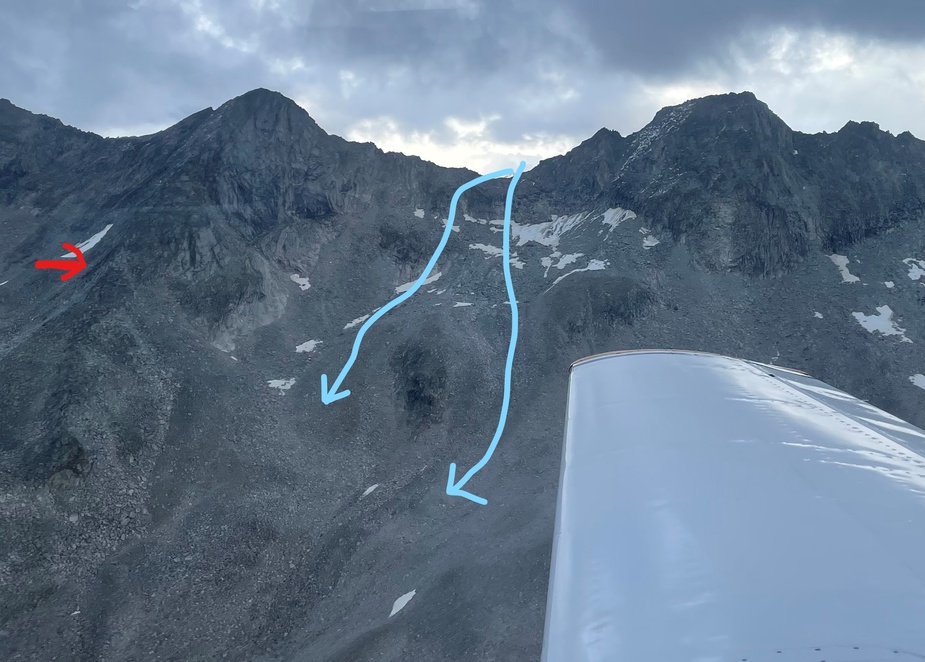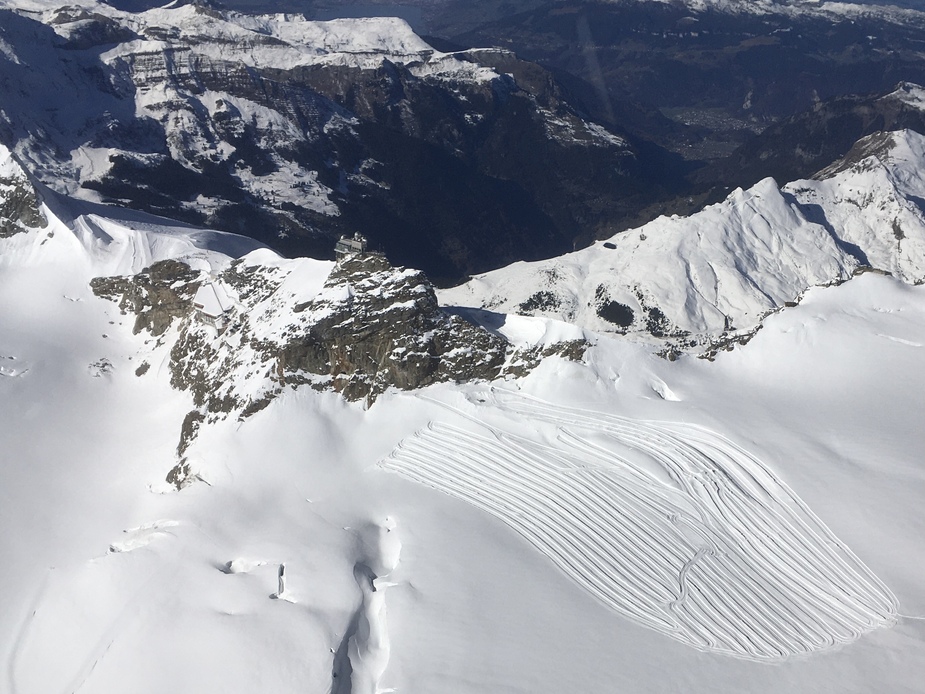Peter wrote:
Anyway, if there are climbers on top, you have to be > 500ft above, no?
The climbers would only make a difference of perhaps 6 feet. If you’re referring to the UK 500 ft rule, it is unique. In other countries you need to be 500 ft above the obstacle.
Good to know then I did this legally 
There was evidently near-zero wind – probably under 5kt.
I do now remember this rule on the mainland. The UK continued the exemption, to enable practice forced landings. It’s a mystery how mainland Europe trains those now. But that’s not relevant to mountain flying, although it does look like quite a few people do get really close intentionally (thinking of some recent accidents there).
And yet train them they do, regularly in this region.
UdoR wrote:
But if it was regarding downdrafts in the Alps, those can go right until the bloody surface.
Peter wrote:
What is the physical process which enables air to flow into a solid material?
I don’t know what point you are trying to make. “Until the surface” is not quite “into solid material”.
The point I want to make is that airflow alongside a mountain can follow the surface and may stick to the boundary layer for quite some 100 meters of altitude, which is not the behaviour you’d expect in flatlands. And depending on thermal (solar irradiation), and wind speed, this may be directly at the mountainside or in the midst of a valley.
Now I don’t have a better photo at the moment, but if you consider a typical mountainside, just like this from a photo I made on this trip here

air may flow over the ridge and fall down thereafter alongside the wall. Now if the air follows those grooves (blue arrows), when flying close to the mountainside you will find this ridge (red arrow) which could be in your flightpath. This is where you could crash. Of course the critical downdraft can be before that.
I know that in that very picture the grooves and ridges are not so impressive, but I think it’s good enough to get the point.
Now assumed you wanted to cross that mountain saddle in that picture just some meters above terrain, you could in fact encounter strongdowndrafts (or updrafts) right before (or after) crossing. And depending on what the topography is behind, you might not be able to get out of trouble quick enough. This is where those rule of thumbs start from (e.g. 1000ft above for each 10 knots of wind speed)
I think when one writes of downdrafts one should also remember that these can also be rotors which can turn you over and smash you into the mountain wall if you are unwary.
Just to add, they act very much like strong wake turbulence.
the Jungfraujoch as seen this afternoon…
Beautiful 
You are very privileged to be able to fly there easily.
I don’t know what point you are trying to make. “Until the surface” is not quite “into solid material”.
I was trying to get to specifics, and you have posted a very good explanation. Another scenario, which also occurs when landing on a runway which starts on the edge of a cliff e.g. LDSB

is that the airflow, which is flowing towards you and down that cliff, is going to pull you down, and with a greater vertical velocity than your climb performance. So in that situation you will probably fly a steeper “glideslope” and not try to aim for the very start of the runway.
The bottom line is that one needs to be well above the terrain. But this isn’t exactly rocket science. The people who want to get really close, for the excitement, are taking a big risk if there is wind.
And wind can be really localised. Last year I flew around the Matterhorn summit (before landing at Aosta) and on the Aosta / Cervinia side the air was totally smooth but on the Zermatt side it was rough as hell and I got out of there really quick.
No mention of katabatic winds yet. I saw a light breeze moving powder snow off the Cairngorm top produce a strong wind down a snow-free valley, which carried several miles out over lower ground. Detected by turbulence when crossing it.
I can’t tell how great flying in the moutains is, just give some souvernirs of my trainings in. Find an Instructor!
Here end of CPL training, I’m backseat while my mate is approaching Barcelonette, the day after huge snowfalls. A breathtaking one (I hate to say that, but here it was like a dream.)
That one is some weeks ago, during MOU rating in Valberg, 25minutes fly distance from Cannes, with my Moutain instructor, a great one.
This was the 4th landing of the session, we can see that the sun is high enough but still makes the final approach a bit misleading. 1 hour earlier, we had it right in front. The sun position must be evaluated before approaching as either shadows or sun rays can hide many dangers.
In HD as soon as YT releases it…
I’m afraid I won’t be having my rating this year, snowfalls are now getting more and more intense.
Yesterday was perfect for alpine flying – cool and very still. Unlimited visibility. I have a lot of excess power in my RV-8 so I can climb to altitudes needed to get over the Alps easily, but it’s definitely more fun to fly lower. Here’s a raw 10 sec clip from up high while descending into the valley towards Raron. Apologies for the horrible sound.